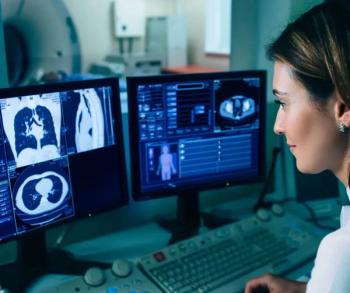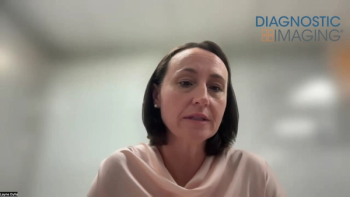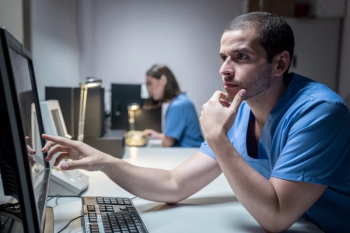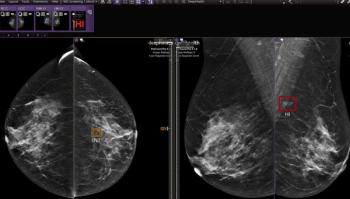
Women in Radiology: A 2017 Update
Women have been notoriously underrepresented in the radiology workforce, a 2017 update to the issue.
The good news about women in radiology is this: in 2016, the
“We still have the same issues: a very low percentage of women compared to men in radiology, even though there is almost an equal number of men and women in medical school,” said Margaret Szabunio, MD, president of the American Association of Women Radiologists (AAWR), and professor of radiology at the University of Kentucky.
Since 2007, the total number of female residents and physicians grew 43%, according to the
Women's Age in Radiology
When looking at physician age distributions, the 2017 ACR Commission on Human Resources Workforce
“That’s where we’ve seen slight increases in women, and that’s a promising trend,” said Katarzyna Macura, MD, PhD, chair of the ACR’s Commission for Women and Diversity, and a professor of radiology at the Johns Hopkins Medical Institutions. Radiologists in the older group (over 56) are more male-dominated. “These are good indicators that younger women seem to be increasing in the workforce,” she said.
In the 35–45 age group, 32% were women, the same as last year and slightly lower than the 33% in 2014. In the older groups, 46-55, 56-65 and 65 and older, the 2017 figures had decreased or stayed the same from previous years.
Why does it matter whether there are equal numbers of men and women? One radiologist asked “who cares” in the comments on our
“In breast imaging, especially, patients prefer to have a woman physician,” she said. Workforce
Radiology versus Other Specialties
Where are the female doctors? A 2015 Association of American Medical Colleges (AAMC)
• Obstetrics/gynecology: 85% women
• Pediatrics: 75% women
• Family medicine: 58% women
• Psychiatry: 57% women
Of all physicians in the
• Obstetrics/gynecology: 57% women
• Pediatrics: 64% women
• Family medicine: 41% women
• Psychiatry: 42% women (child psychiatry is 53% women)
Making Changes
To make changes, “think locally versus nationally,” said Szabunio. “We’re trying to do this successfully at the local level.” Then the word will spread at the national level.[[{"type":"media","view_mode":"media_crop","fid":"63954","attributes":{"alt":"Women in radiology","class":"media-image media-image-right","id":"media_crop_3860777685432","media_crop_h":"0","media_crop_image_style":"-1","media_crop_instance":"8165","media_crop_rotate":"0","media_crop_scale_h":"0","media_crop_scale_w":"0","media_crop_w":"0","media_crop_x":"0","media_crop_y":"0","style":"height: 200px; width: 300px; border-width: 0px; border-style: solid; margin: 1px; float: right;","title":"©Robert Kneschke/Shutterstock.com","typeof":"foaf:Image"}}]]
More exposure in medical school through leadership: Radiology isn’t typically a required course or part of the curriculum, and many students aren’t exposed to it until a fourth-year elective. By then it might be too late, as the student has already committed to a residency area. Radiologists need to take leadership in the medical school and influence the curriculum. Szabunio said a radiologist became assistant dean for education at her school, giving the field more influence. The radiologists at University of Kentucky created electives in the first or second year of school. She created a breast imaging elective, and other radiologists did electives on their subspecialties, where the students can shadow the radiologist for a semester. The students can share what they learned and saw with their fellow students, increasing awareness. Lecturing is another way to provide exposure. If mostly men are lecturing, women won’t know there are women in the field, so Szabunio gave a breast imaging talk. “They see me as a woman talking about an exciting area of radiology. It’s eye-opening for them,” she said.
Mentors: Without enough female radiology mentors, medical students see the field as male-dominated. If female radiologists can mentor women before they choose a specialty, they’ll be exposed to different parts of radiology they may like, perhaps those with more patient contact like interventional radiology, pediatric radiology, or breast imaging. Students impressed with their mentors may go into those specialties. The lack of female role models and mentoring over the years is a significant deterrent.
Outside programs. Some deans aren’t open to changing the curriculum to bring in radiology earlier, said Szabunio. Radiologists can create outside programs as well. The University of Kentucky and several other medical schools conducted a weekend radiology fair and invited all medical students. They gave didactic lectures and had stations on how to do some radiology procedures and provide exposure to radiology.
Promote women in leadership. If women are more visible in local and national leadership, that makes it easier to provide younger women with mentors and encourage them to enter radiology. The ACR is trying to appoint more women to ACR leadership positions, said ACR’s Macura. The board of chancellors is about 30% women, she said, slightly above the 27% of women in residency positions and above the
“Most importantly, next year we’ll have our first woman chair of the ACR board, Geraldine McGinty, MD, who is currently vice chair. She’ll be the first woman in the 95 years in existence of the College,” Macura said.
In addition, the ACR just funded a project through its innovation fund to implement a major survey to address barriers to a diverse workforce in radiology.
“I believe once we have results, maybe mid-next year, we should have some concrete policy directions,” said Macura. “Based on that, I’m hoping we’ll move forward with more focused strategies.”
Opportunity to Change Minds
There is a big opportunity to influence students. Not all medical students know what they want to specialize in at the beginning of medical school. An
While results from the many formal and informal initiatives may take eight to 10 years, said Macura, there are interesting and encouraging trends. The engagement of younger women is amazing, she said, especially as they use social media. That’s helped to spread concepts in radiology and encourage more women to join, diversifying the workforce. “We’re beyond the awareness. We’re in the implementation phase to making some changes. I hope the flat line will tip up a little.”
Newsletter
Stay at the forefront of radiology with the Diagnostic Imaging newsletter, delivering the latest news, clinical insights, and imaging advancements for today’s radiologists.




























